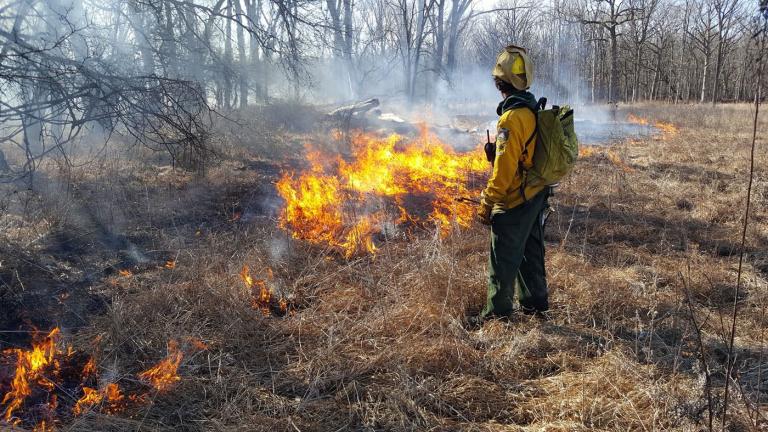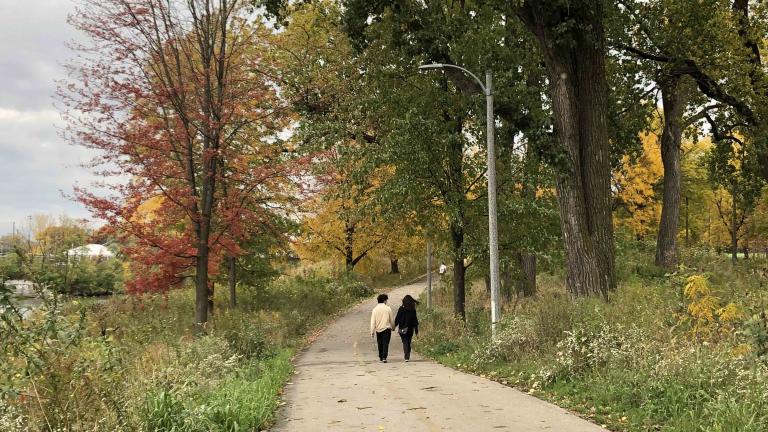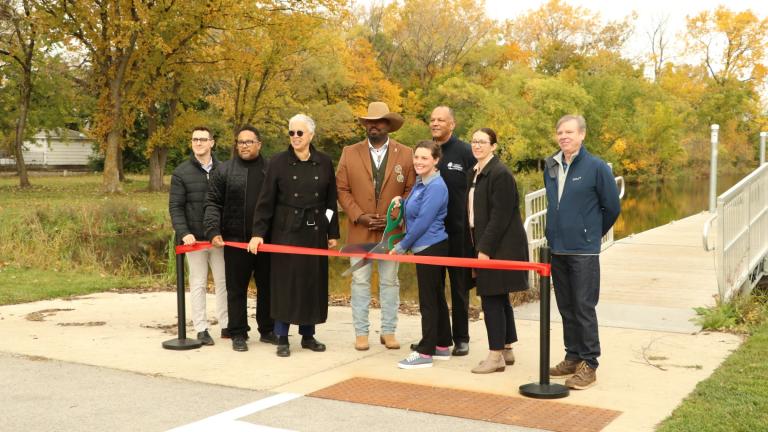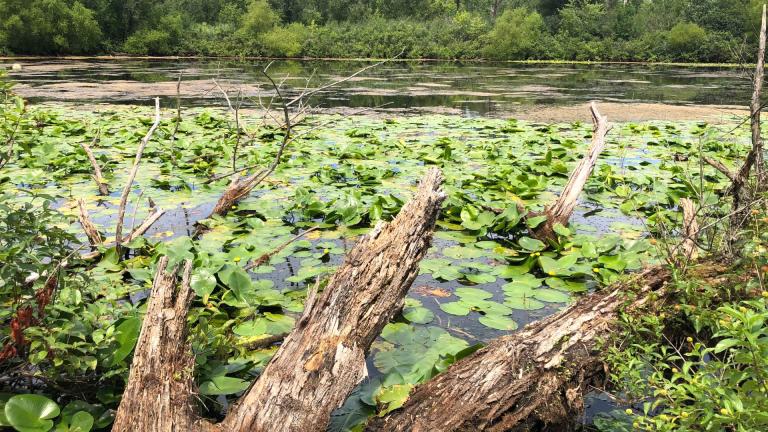 Shedd Aquarium biologist Melissa Youngquist (l) and volunteer Beth Herzfeld team up to take down some buckthorn. (Patty Wetli / WTTW News)
Shedd Aquarium biologist Melissa Youngquist (l) and volunteer Beth Herzfeld team up to take down some buckthorn. (Patty Wetli / WTTW News)
On a map, Skokie Lagoons looks like an oasis of green and blue. But appearances can be deceiving — not all green is good.
Where the untrained eye might see lush vegetation, experts recognize the signs of unwanted growth.
In this particular neck of the woods, an invasive species called European buckthorn is public enemy No. 1, creating a dense thicket that blocks sunlight, crowds out native plant species and offers little in the way of benefit to wildlife.
It's a site ripe for restoration, the process of bringing an ecosystem back into its natural balance.
Which is why, on an unseasonably mild mid-December morning, a group of volunteers organized by Shedd Aquarium headed into this north suburban forest armed with loppers and saws.
Their mission: Attack the buckthorn. Chop it, snap it, burn it.
Restoring habitat, it turns out, looks a lot like destroying it.
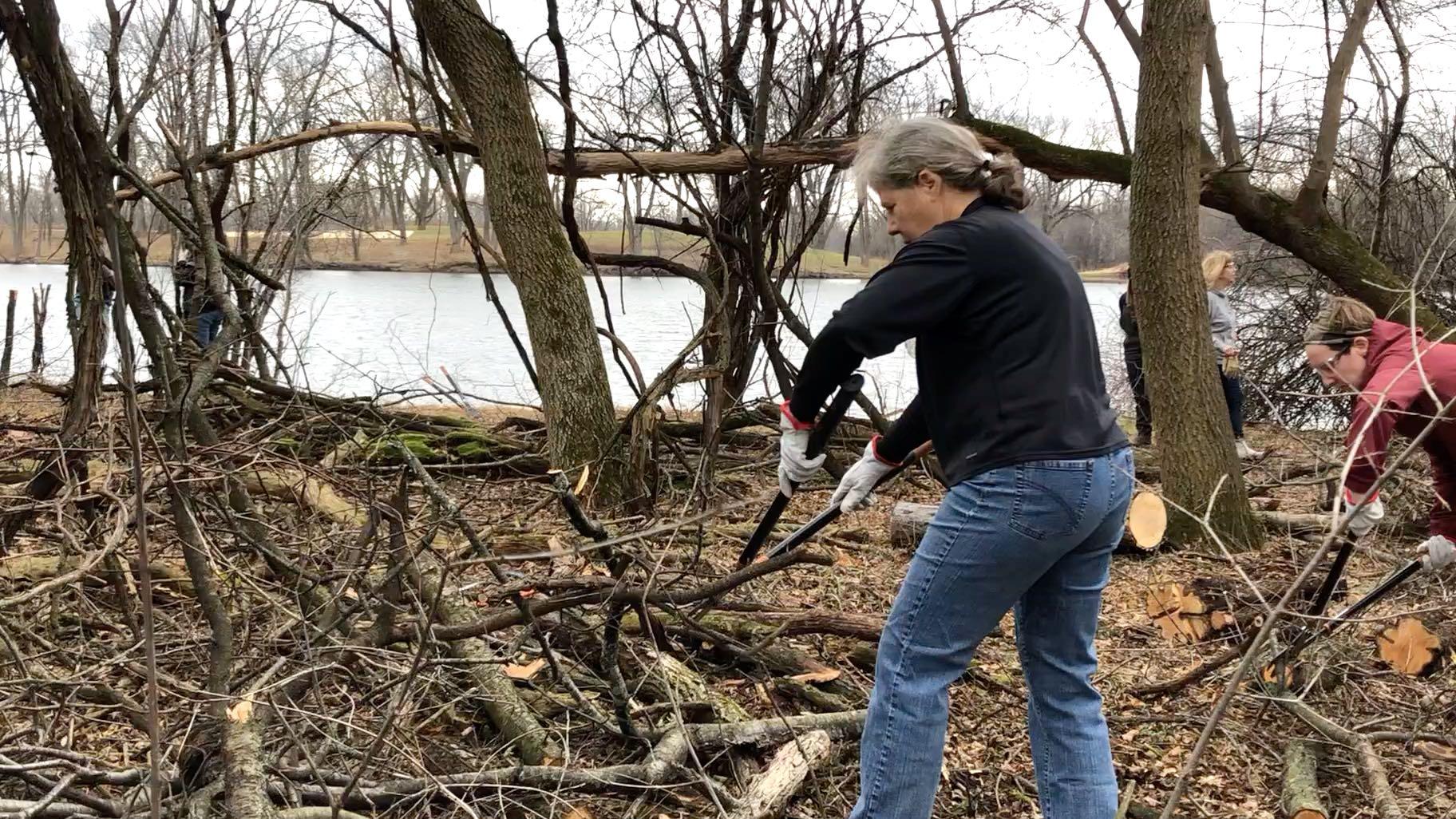 Volunteer Karen Gray-Keeler uses loppers to cut buckthorn down to size. (Patty Wetli / WTTW News)
Volunteer Karen Gray-Keeler uses loppers to cut buckthorn down to size. (Patty Wetli / WTTW News)
Buckthorn, to take a little anthropomorphic liberty, is something of an evil genius. The plant emits a toxin — emodin — from its seeds, leaves, bark and roots that kills or stunts other flora and as a way to ensure its own survival and exponential spread.
“It comes in and it outcompetes everything else. We don't want that,” said Maggie Cooper, coordinator of conservation action for Shedd Aquarium, which has hosted monthly work days at the lagoons since 2019 as part of its Shedd Action Days program. (Friends of the Chicago River has long been active in restoration at the lagoons as well. All efforts are conducted in partnership with the Forest Preserve District of Cook County.)
If an aquarium seems like a strange fit for forest restoration work, note that emodin has been linked to declines in amphibian populations, such as frogs and salamanders, both by entering the food chain and by preventing the development and hatching of eggs.
Buckthorn is harmful to amphibians in another way, said Melissa Youngquist, a Shedd biologist. Frogs and salamanders rely on leaf litter for shelter and hiding spaces, she said, but buckthorn leaves decompose far faster than those of other trees. So when buckthorn dominates a forest, as it does in the area surrounding the lagoons, there's little left for burrowing.
The good news, Youngquist said, is that species have proven extremely responsive to restoration efforts. “Give them quality habitat and they will come back,” she said.
After a quick introduction from Cooper, volunteers set out on a mucky 10-minute trek — tools cautiously carried sharp-end-down per Cooper's instructions — to the day's work site. This time of year, the ground is usually frozen, not a muddy bog, said Cooper.
They reached a clearing, where an advance team had already stoked a small brush fire, and were greeted by Christopher Riccardo, conservation action facilitator, who schooled the group in the basics of brush-cutting.
“Anything about two-finger size, a lopper's gonna go through. Anything bigger than that, you're going to be struggling,” Riccardo said, holding up his own digits to demonstrate the proper width. “For saws ... if you can get your hands around it, you can take it down. When you do cut something down, you own it. You need to cut all the little branches off and cut them into maybe three- to four-foot sections.”
The 20 or so volunteers then dispersed, breaking off into teams of two. It's physical work, and people almost immediately began shedding layers.
“It's nice to go outside and get really sweaty and really dirty,” said Beth Herzfeld, who drove up from Chicago's Lincoln Square neighborhood to take part in the work day.
Herzfeld, who recently completed master naturalist training, first volunteered at the lagoon site two years ago and said the progress was noticeable.
“This was impassable,” she said of the clearing. “It's crazy the difference. It's very tangible.”
Working alongside veterans like Herzfeld was newcomer Tyler Davis. He lives in the Rogers Park neighborhood and was taking advantage of a volunteer day benefit offered by his employer.
"I love the lagoons and I've been spending more time in the preserves since the pandemic," Davis said. "I wanted to give back to a place I enjoy and walk through. I had this lightbulb moment to volunteer in a place where I benefit. It would be great to help keep this preserved."
The key to preservation and restoration is creating a climate in which more people have the same sort of epiphany as Davis, said Gary Morrissey, a longtime volunteer and retired educator.
“We need to teach people to love the outdoors before we ask them to save it,” he said. “For people who have no experience with nature, we've got to get them to enjoy it and see the need to keep this.”
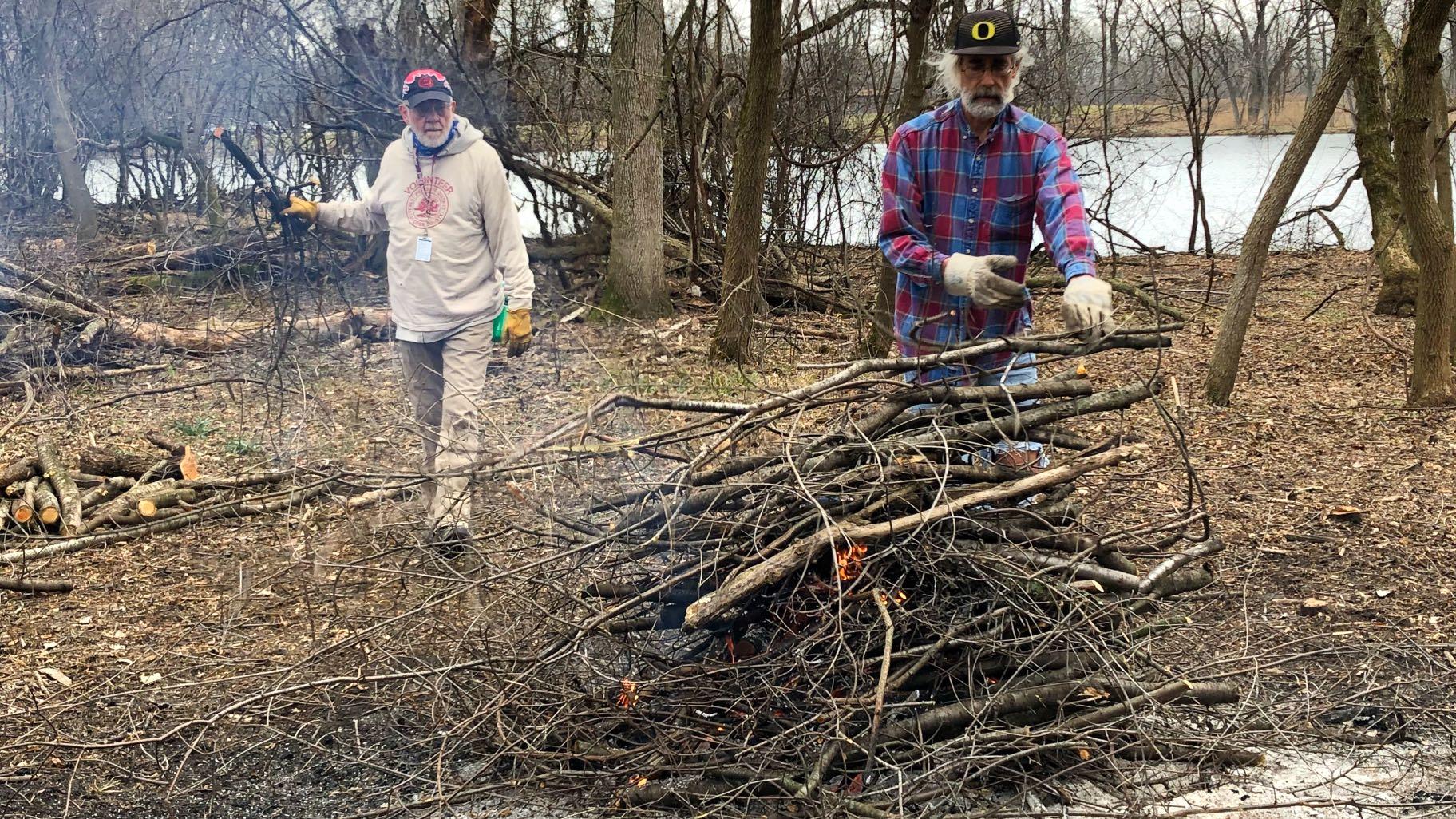 Long-time volunteers Gary Morrissey and Dan Goodwin stoke the pile of burning buckthorn. (Patty Wetli / WTTW News)
Long-time volunteers Gary Morrissey and Dan Goodwin stoke the pile of burning buckthorn. (Patty Wetli / WTTW News)
The Shedd's monthly work days at the lagoons — one is held on Wednesday and one on Saturdays — attract anywhere from 10 to 35 volunteers, Cooper said. The work can be modified to accommodate people of different ages and fitness levels, she noted, and every bit helps, considering the enormity of the task at hand.
“Buckthorn grows big and small,” she said. “We had a 4-year-old and they picked up leaves. Or you can just carry branches.”
Beyond the physical aspect, there's a strong educational component to work days, from introducing people to the concept of invasive species to describing a healthy ecosystem's benefits.
“When Maggie (Cooper) was talking, I was like, ‘No way, an invasive tree is affecting amphibians?’” said Mona Ng, who hacked away at buckthorn alongside her friend Esther Yim. “It's interesting.”
The work doesn't stop for winter, said Cooper, who's yet to cancel a work day due to weather. When the snow's falling, the woods take on a magical feel, she said. In fact, she once had a volunteer ski into the site.
That volunteer would be Dan Goodwin, who on this December day kept the brush pile burning. “I've gotten to know some great people, and we eat well,” Goodwin said.
As if on cue, out came the marshmallows. The morning ended with everyone gathered around what felt like a campfire. It was time for s'mores.
Contact Patty Wetli: @pattywetli | (773) 509-5623 | [email protected]



